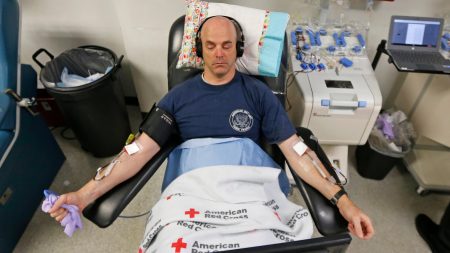Federal Health Agencies Restore Public Access to Key Information Following Court Order
In a significant move to reinstate public access to critical health information, federal health agencies have begun restoring several webpages and datasets that were previously removed. This action follows a court order issued by U.S. District Judge John Bates in Washington, mandating the restoration of access to information that had been taken down in response to a presidential executive order. The Centers for Disease Control and Prevention (CDC) and the Food and Drug Administration (FDA) were among the agencies that restored various webpages and datasets, including those related to adolescent health, HIV monitoring, contraception guidance, and the impact of pollution and poverty on vulnerable communities. The restoration of these resources is a step forward in ensuring that the public and healthcare professionals have access to vital information that had been temporarily removed.
CDC Restores Nine Webpages and Datasets
On Tuesday night, the CDC restored nine webpages and datasets, marking a partial reversal of the earlier takedowns. These restored resources include critical information on adolescent health, HIV testing and monitoring, contraception guidance, and data analyzing how factors like pollution and poverty disproportionately affect certain communities. The restoration of these pages brings back essential tools and information that healthcare providers and researchers rely on to address public health challenges. However, as of Wednesday morning, the process appeared incomplete, with some links still not functioning properly. A federal health official, speaking on condition of anonymity, confirmed that the nine CDC pages were restored to their state as of January 30, prior to their removal.
FDA Restores Guidance on Clinical Trials and Sex-Specific Data
The FDA also took steps to restore critical information, particularly regarding clinical trials and sex-specific data. The agency restored recommendations aimed at increasing the enrollment of females in clinical trials, as well as guidelines for analyzing and interpreting sex-specific data. Additionally, the FDA reinstated instructions for including sex-specific information in regulatory submissions for medical products. These restored resources are essential for ensuring that clinical trials account for gender-related differences, which are crucial for the safety and efficacy of medical products. The restoration of these guidelines supports the development of more inclusive and effective healthcare interventions.
Background: Executive Order Sparks Controversy and Website Takedowns
The removal of these webpages and datasets was tied to President Donald Trump’s executive order signed on January 20, his first day back in the White House. The order directed federal agencies to use the term “sex” instead of “gender” in federal policies and documents. In response, Kathy Mc dystie, the acting director of the Office of Personnel Management, instructed agency heads to eliminate programs and take down websites that promoted “gender ideology.” This directive led to widespread takedowns across government websites, with many resources being removed without prior notice or explanation. While some information was gradually restored, public health experts and advocates raised concerns about the continued absence of critical resources, prompting legal action.
Advocacy Group Files Lawsuit to Restore Access to Health Information
The takedowns prompted a lawsuit filed by Doctors for America, represented by the Public Citizen Litigation Group, against the Office of Personnel Management (OPM), the CDC, the FDA, and the Department of Health and Human Services. The lawsuit sought to restore public access to the missing information, arguing that the removal of these resources undermined public health efforts and deprived healthcare professionals of essential tools. Judge Bates ruling was a victory for transparency and public access to information, as it required the government to restore the identified webpages and datasets and to identify others that had been taken down without proper justification.
Court Ruling and Ongoing Efforts to Restore Access
Judge Bates’ ruling emphasized the importance of maintaining public access to health information and ensuring that any changes to government resources are made with adequate notice and reasoned explanation. The court’s decision has compelled federal health agencies to take steps to restore the removed content, though the process remains ongoing. Public health experts and advocates continue to monitor the situation, ensuring that all critical resources are fully reinstated and accessible to the public. The case highlights the tension between government directives and the need for transparency, particularly in the realm of public health, where access to information can be a matter of life and death.
Conclusion: A Win for Transparency and Public Health
The restoration of these webpages and datasets represents a significant win for transparency and public health. The court’s ruling underscores the importance of maintaining access to critical health information, particularly in an era where such resources are increasingly essential for addressing public health challenges. While the process of restoring all removed content is still underway, the progress made thus far is a step in the right direction. Advocacy groups, healthcare professionals, and the public will continue to play a crucial role in ensuring that government transparency and access to information are prioritized, particularly in areas that directly impact public health and well-being.















